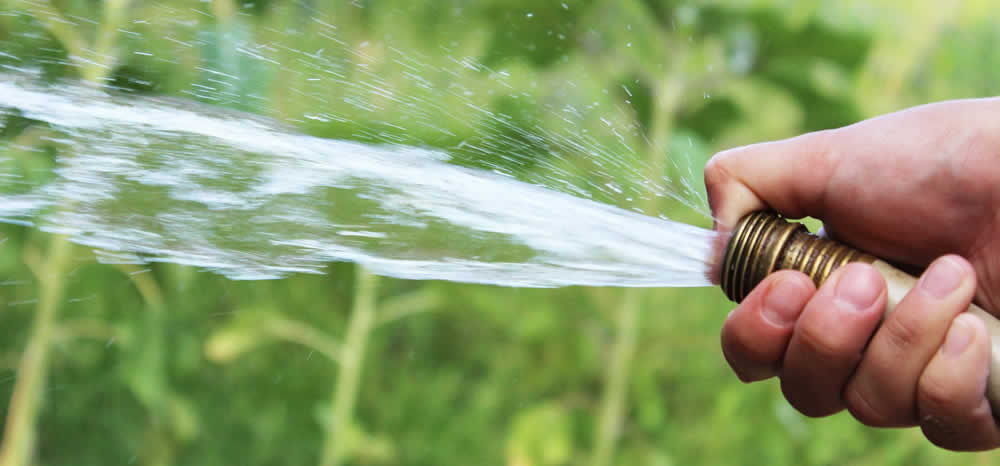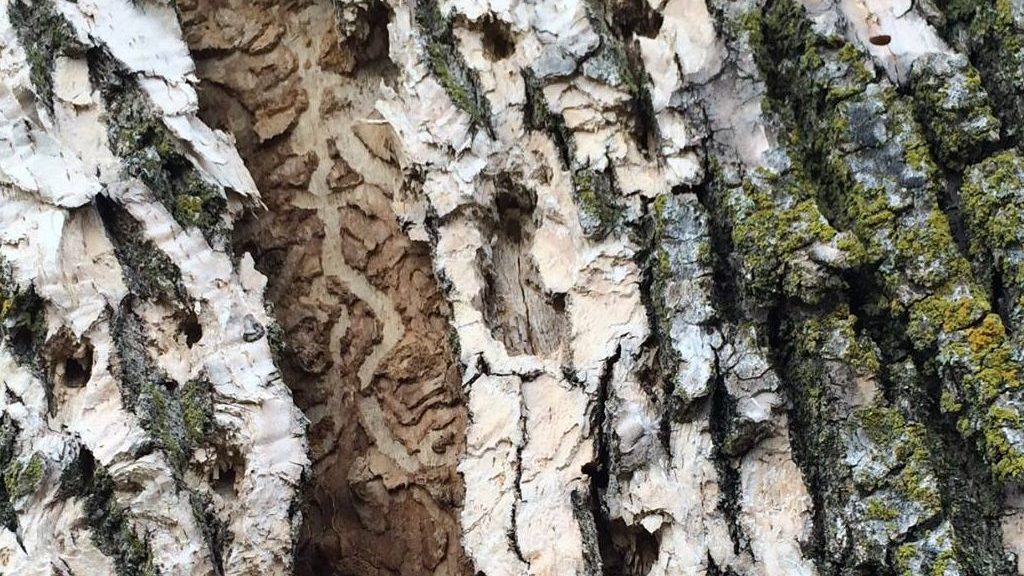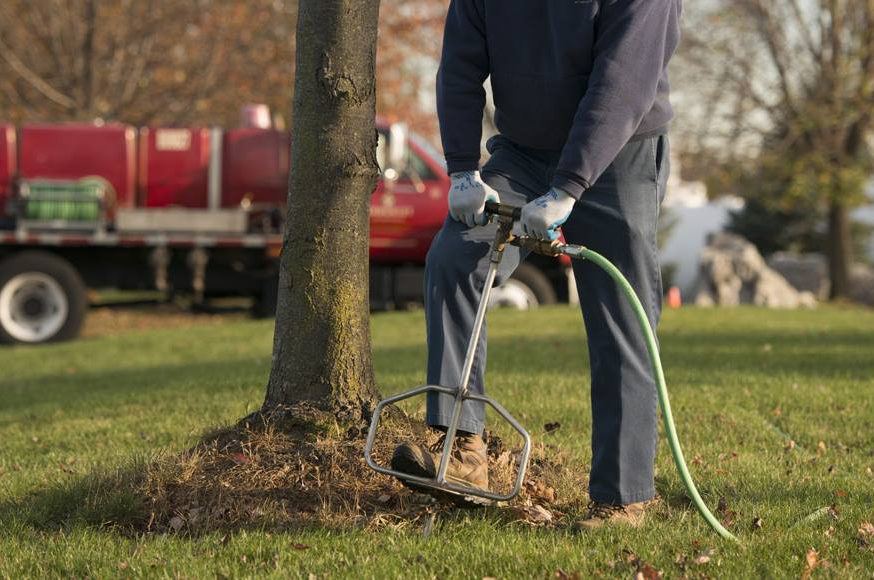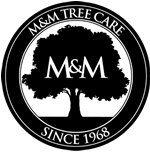Spring is in the air and our yards are beginning to come back to life after a long winter. With that in mind, all of us here are M&M thought we would put together a short spring tree care list of things for any tree owner to consider.
Spring Tree Care Begins With Cleaning and Inspection
The winter winds have gathered debris from far and wide. More than likely it has now deposited it around your yard. Trees are especially good at gathering this debris. This debris and trash can cover trouble spots and provide cover for insects and pests that can damage your trees. Additionally, it prevents the diligent gardener from providing proper care to his or her trees. Once the debris is gone, you are better able to inspect your trees for damage over the winter months and potential issues that you will need resolve.
Storms and other conditions over the winter can cause a host of issues. Broken branches and damage to the trunk of a tree are among the first things to consider. You will need to remove any broken branches, making clean cuts at the point of the break to reduce the possibility of decay or disease entering the tree through those places. This will also relieve stress on the tree if it wasn’t a complete break or put additional weight on other branches. Damage to the trunk of the tree can introduce elements and provide entry into the more vulnerable core of the tree to disease, pests, and animals. You will want to check out this damage to see if it is something that will need to be patched or treated by a certified arborist.
In addition to trunk damage, you will also want to inspect for branches that are not budding out or appear to be dead. While it is tempting to remove seemingly dead branches before the height of Spring, some of them may not be dead but actually dormant due to stress on the tree. In some cases, this could be an indication of disease, but often issues like this can be resolved by a change in fertilization or water provision. Lack of deep watering paired with an unusually hot summer is an example of a scenario that could result in bare branches. Also, some native soil is already rich in the elements of most fertilizers, so any fertilization could result in overfertilization. You should consult with a certified arborist such as M&M Tree Care for a proper diagnosis and advice on treatment options. We have experts in tree care that are specific to the different areas throughout Wisconsin and can help you determine the best course of action to help your trees to thrive.
Ensure Trees Have Enough Water
Young trees require increased watering to encourage root development. Many trees, even more mature ones, suffer during growing seasons that are hotter and drier than normal. Conversely, some areas have a higher water table and require less watering from those who tend them. Springtime is especially important, as this is one of the times of the year when trees experience their greatest growth. Watering is an important part of that process, and not just for the immediate needs of the tree. A tree requires a root structure that is at least as far out and deep as the tree is grown out and tall. Deep watering is occasionally needed (depending on your area) to ensure the proper growth and maturity of the tree.

Check out our blog post “A Quick Guide to Watering Trees” for more information about this important topic.
Remove Weeds and Competing Plants
In addition to removing the debris around your trees and other ornamental plants (such as hedges), your spring tree care list should include removing any weeds and other plants that will compete with your trees for water and nutrients. While weeds aren’t as big a deal with regards to water and nutrients for your older and larger trees, they can provide cover for pests and signs of disease that are a danger for those larger trees. For younger and smaller trees, they can also reduce the effectiveness of anything you provide for them. But there are bigger threats to the health of your tree that you will want to remove as well. Any vines or climbing plants are a danger to your trees. Some of them are parasitic and will feed directly off of your trees until they kill them. Those that aren’t parasitic still compete for nutrients and sunlight, as well as add weight to your tree. The additional weight can contribute to trunk damage and broken branches in stormy or wintery conditions.
Removing the vines when they are first growing onto your tree makes it easy to prevent them. However, sometimes you inherit the problem when buying a new property or didn’t realize the problem until it was too late to stop it early. If the vines are substantial and not parasitic, you can cut them off near the ground and let them deteriorate off the tree naturally. Your tree will look rough for a year or two, but it will be much healthier. You can also use a service such as M&M Tree Care to remove these damaging competitors and have your trees looking better far more quickly! If they are parasitic and widespread, you will need the help of a certified arborist to help remove them.
Check and Replenish Mulch
Providing appropriate mulching is an important way to improve the health of your tree. Mulching prevents weed and vine growth and helps retain moisture in the ground beneath the tree. It also insulates the roots from extreme heat in the summer and cold in the winter. However, if the mulching is not done properly, it can damage the tree making it unstable or even killing it. See our blog post about why mulching around trees is so important for more information.

If you have plenty of trees (or plenty of friends/neighbors with trees), a service called “Chipdrop” might be perfect for you. But be warned, this service is not right for most folks. While the mulch is free, it has not been sifted to remove possible trash and will probably contain larger pieces that are not suitable for mulch. Also, you are not able to schedule a time or tell them how much you want. The mulch is brought to you by tree removal services in your area, who will just dump it wherever it is convenient to them after they are finished trimming or removing a tree nearby. They will dump whatever they have, which could be a substantial amount. If you want the ability to schedule drop-offs and be able to dictate how much you want and where you want it, M&M Tree Care offers a mulching service of our own! Please see our NATURAL MULCH DELIVERY page for more information.
Check For and Remove Pests and Disease
This is another important step in spring tree care. This is best done by a certified arborist who will know the signs of disease or pest infiltration. They will be able to best identify the problem and determine the best treatment to remove the issue. Resolving the issue may involve treating nearby trees as well in case the pest of disease has spread. The members of our field team are all certified arborists and very familiar with the pests and diseases common to Wisconsin and the Milwaukee area. We also have information about some of these on our Tree Care Blog.

Fertilize Your Trees
Fertilization for your trees is important no matter what time of the year, but it is definitely a step on any good spring tree care list. Most trees do not have the right combination of minerals to perpetuate proper growth and good health from the lawns that surround them. Without the natural breakdown of materials that make up a forest floor, the soil around them is easily depleted. Even if you regularly fertilize your yard, that might not provide what your trees need. Additionally, some trees in your yard may not be native to our area and may need specialized care to make sure that they thrive in this new area. Your best option to determine what (if any) fertilization is needed for your trees is to have a soil analysis done. M&M Tree Service has the resources to analyze your soil and give you a detailed report of what you need. We can even set up a fertilization schedule to make sure your trees get all the nutrition they need!
For more information about tree fertilization techniques and considerations, see our “Tips for Using Tree Fertilizer” blog post!

Plant New Trees
This is the perfect time to plant new trees on your property. The location and care for your young trees are essential for their health and proper growth. Before you buy your new tree or plant it, you should consult with a certified arborist in your area to determine what kind of tree will give you the look you are wanting and be able to thrive where you want to put it. They can also help you put together a care plan for your trees that will be simple and tailored to your needs.
We hope that this spring tree care list was helpful! Trees are our business…and we take them very seriously. Let one of our ISA certified arborists help you complete your spring tree care. With our expert knowledge of trees that thrive in the Milwaukee area, we will provide you with answers to your questions.
